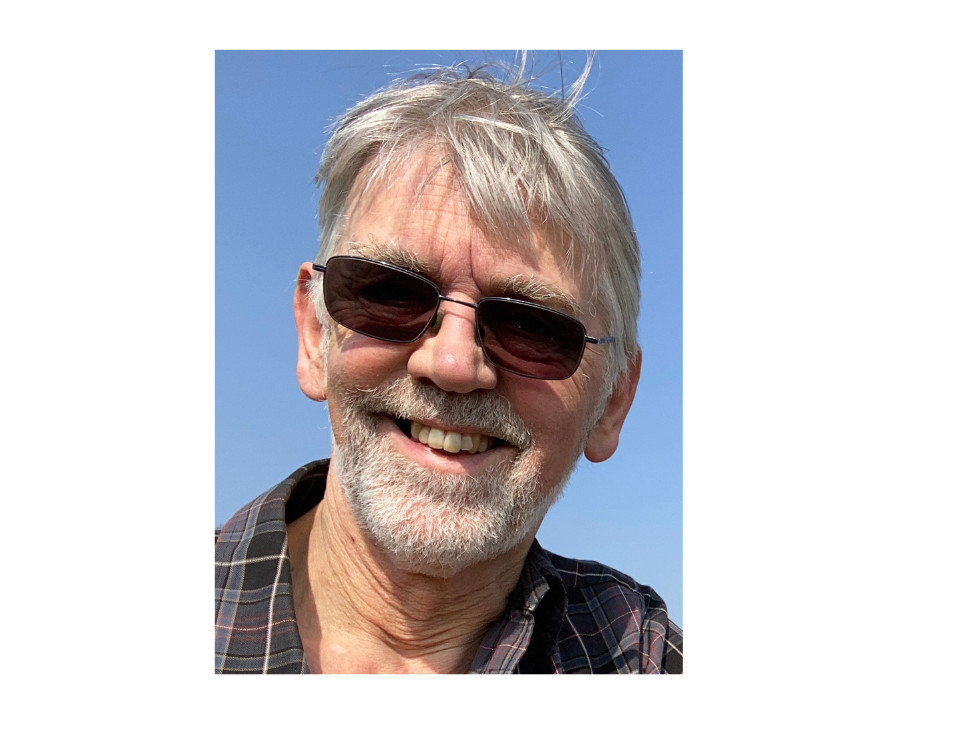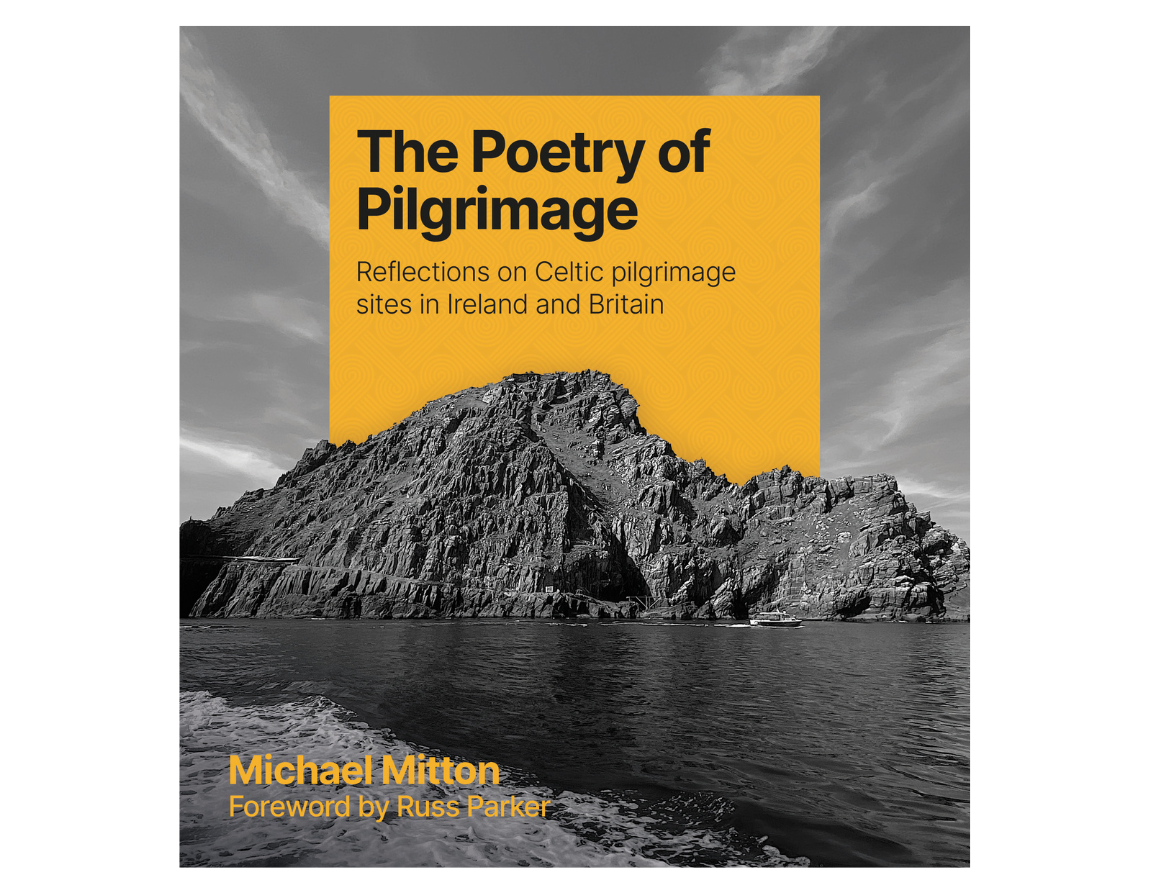Michael Mitton’s new book, The Poetry of Pilgrimage, highlights the Celtic saints and sites which have drawn pilgrims for centuries and celebrates them in poetry. This is the first of three extracts – the story of Illtyd of Llanilltud Fawr.
20 October 2024
Remarkable works of grace
In 2012 Russ Parker invited his friend and colleague Michael Mitton to assist him in leading a pilgrimage to Wales and Ireland. Thus began a yearly pattern of pilgrimages which continues to this day. They have led pilgrimages in Ireland, Wales, Scotland, the north of England, Cornwall and more recently to Assisi, and they both attest to ‘the remarkable works of grace that take place in our pilgrims on these travels’.
Michael serves as co-leader and spiritual director on these journeys. He writes:
I have never ceased to be amazed and delighted to see the transformation and healing that happens in the hearts of our pilgrims when we usher our broken humanity to these blessed places. Here, our wounded stories are held in the context of the memory of these ancient stories of faith, and we meet the Jesus who is the same yesterday, today and forever.
Early on in these pilgrimages, Michael tried to find a way of expressing something of this experience, and he found ‘the only way I could do this was through poetry’:
I am no expert in poetry, but I am part of that large group of people who have found it easier to express emotional and spiritual truth in poetry rather than prose. For me, poetry catches something of that thermal air current that lifts the soul in these sacred places.
When, with some diffidence, he shared his poems with the group, he was pleased to discover that what he had written resonated with the pilgrims’ experiences.
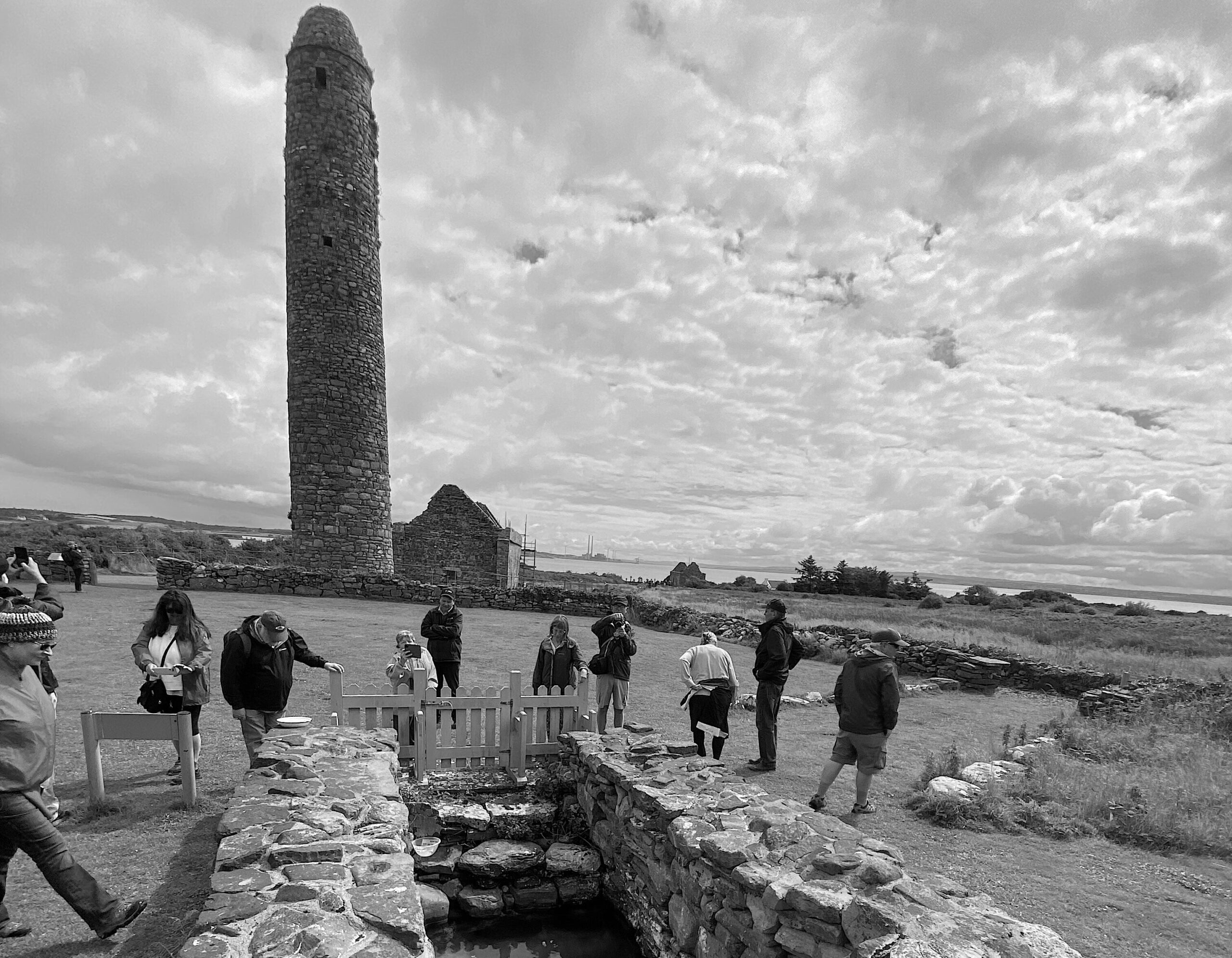
I have never ceased to be amazed and delighted to see the transformation and healing that happens in the hearts of our pilgrims.
Left: pilgrims to Scattery Island, Ireland
Moments of ignition
As Russ Parker writes in his Foreword to the book:
I was there when Michael’s poems were born. They were written in the moment and read out either at the end of the day or on the next day. They captured something of what we had all experienced and gave us a touching place to appreciate and be held by the holy rhythms we had moved through. These poems were moments of ignition when the not-yet of seeking godly encounter became the now of renewal.
Almost always someone in the group would ask if Michael would publish the poems, but somehow this never seemed right, for he assumed that the poem would only really have life for those who actually experienced the location which inspired it. However, over time, he has come to recognise that these poems can have meaning for those who have not been able to visit the sites. Michael says: ‘I have discovered that, by some mysterious working of grace, the poem has enabled the reader to be transported in heart and mind to the pilgrimage site and the story connected with it, where they can also share in this enlivening encounter with the Spirit of God.’
Here, to give a taste of the riches – and originality – of Michael’s new book is the story of Illtyd of Llanilltud Fawr.
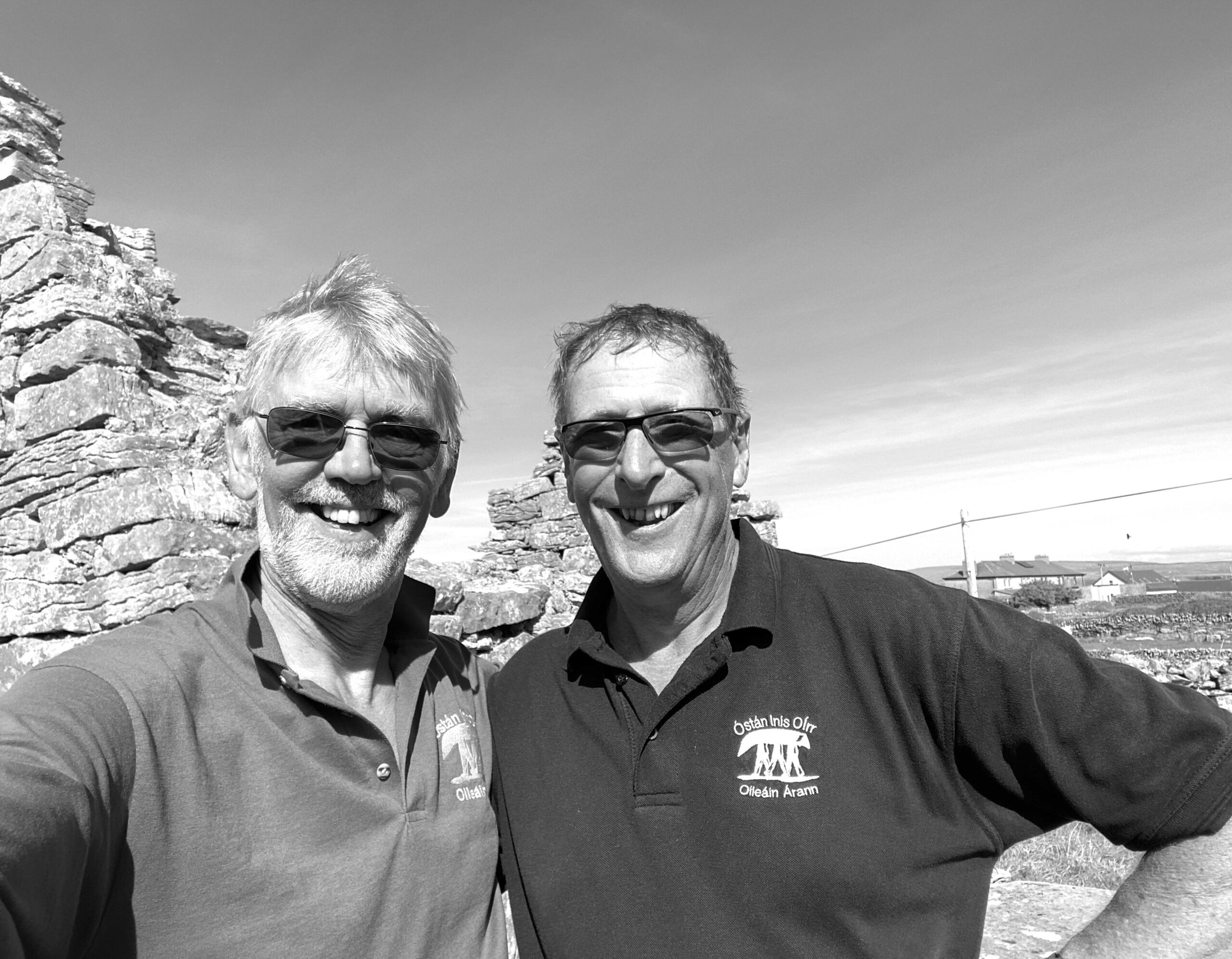
I was there when Michael’s poems were born. They captured something of what we had all experienced and gave us a touching place to appreciate and be held by the holy rhythms we had moved through.
Right: Russ Parker (on the right) with Michael Mitton
Illtyd of Llanilltud Fawr
Story
Illtyd is one of the earliest recorded saints in the Celtic era. He was born early in the fifth century, long before the birth of David. Some say he was born in Brittany, but this is uncertain. What we do know is that he was a highly intelligent man. He was said to be skilled as a theologian, philosopher and mathematician, and he was also a writer and speaker with excellent rhetoric. Despite all this learning, he preferred a military career and became a soldier in Wales.
Then his life took a major turn one day through an encounter in a forest. Accounts vary, but it seems that one way or another, Illtyd met a man of inspiring holiness while he was with his fellow soldiers in the forest. The quality of this man’s life showed up the hardness and shallowness of his colleagues, and this had the effect of causing Illtyd to abandon his military career and follow the monastic life. Initially this was the life of a hermit, but, as was often the case, people sought out hermits for their wisdom, and it was not long before a small community was formed around Illtyd, who was the natural abbot of the community.
With Illtyd’s keen mind, this community soon grew and became a remarkable centre of Christian learning and training. As a college of learning, it attracted people from all over Europe, and it is said that it had seven halls, 400 houses and more than 2,000 students at its peak. It is reckoned that both Patrick and David spent some time learning here.
I love to think of this highly intelligent and capable man stepping aside from his military career and engaging instead in the spiritual battle. His particular weapons were to do with using his fine mind, but I get the impression that he was also a man with a receptive heart. It was a touching encounter with a holy man that changed the direction of his life, not intellectual speculation. Study for him could only happen in the context of a warm and loving community where all students were open to divine, life-changing encounters at any time and in any place.
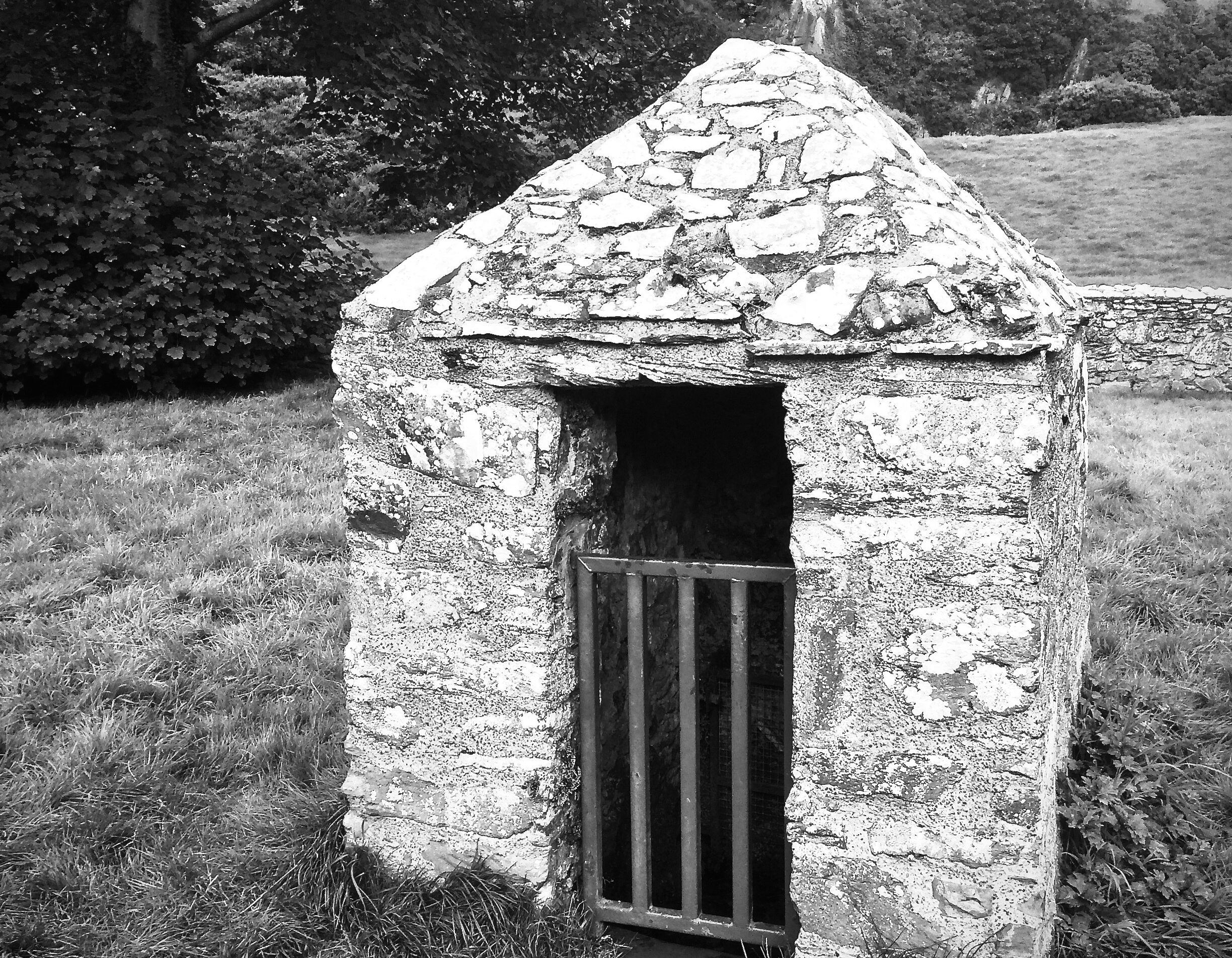
Illtyd’s community became a remarkable centre of Christian learning and training. It is reckoned that both Patrick and David spent some time learning here.
Left: one of the Struell Wells, in Northern Ireland, traditionally associated with St Patrick.
Location
Today the community that Illtyd established has become the town of Llantwit Major (Llanilltud Fawr in Welsh). When we visit the town with our pilgrims, we make straight for St Illtyd’s Church, which is supposedly situated over the site of Illtyd’s community. His school is said to have stood on the north side of the churchyard, and the monastery situated north of the tithe barn on the nearby Hill Head.
The church is divided into two areas by a wall. The walls of the eastern section are decorated with medieval religious wall paintings. The western section contains a small museum which houses the Llanilltud collection of early inscribed Celtic stones, and they are virtually all that remains of the early Celtic church that grew out of Illtyd’s community. The Samson Cross (also known as the Illtud Cross) probably dates from the early tenth century and is believed to be dedicated to Illtyd.
It has often been our practice with our pilgrims to reach out and take hold of these ancient crosses that can be found on many sites of our pilgrimages. The feel of them not only connects us with the vibrant faith of the early church that is inspiring our pilgrimages, but we also feel ourselves making a connection with the cross of Jesus. With the larger crosses, we will gather around them as a group of pilgrims. With the smaller crosses, we individually touch them in silence, and I have often observed our pilgrims tearfully and affectionately hugging them as if they are hugging a long-lost friend.
I think of Augustus Toplady’s ‘Rock of Ages’: ‘Nothing in my hand I bring, simply to thy cross I cling.’ Such moments don’t require explanation – we simply acknowledge that God has provided some help along our path to enable us to open our hearts more freely to the wonderful grace of Calvary.
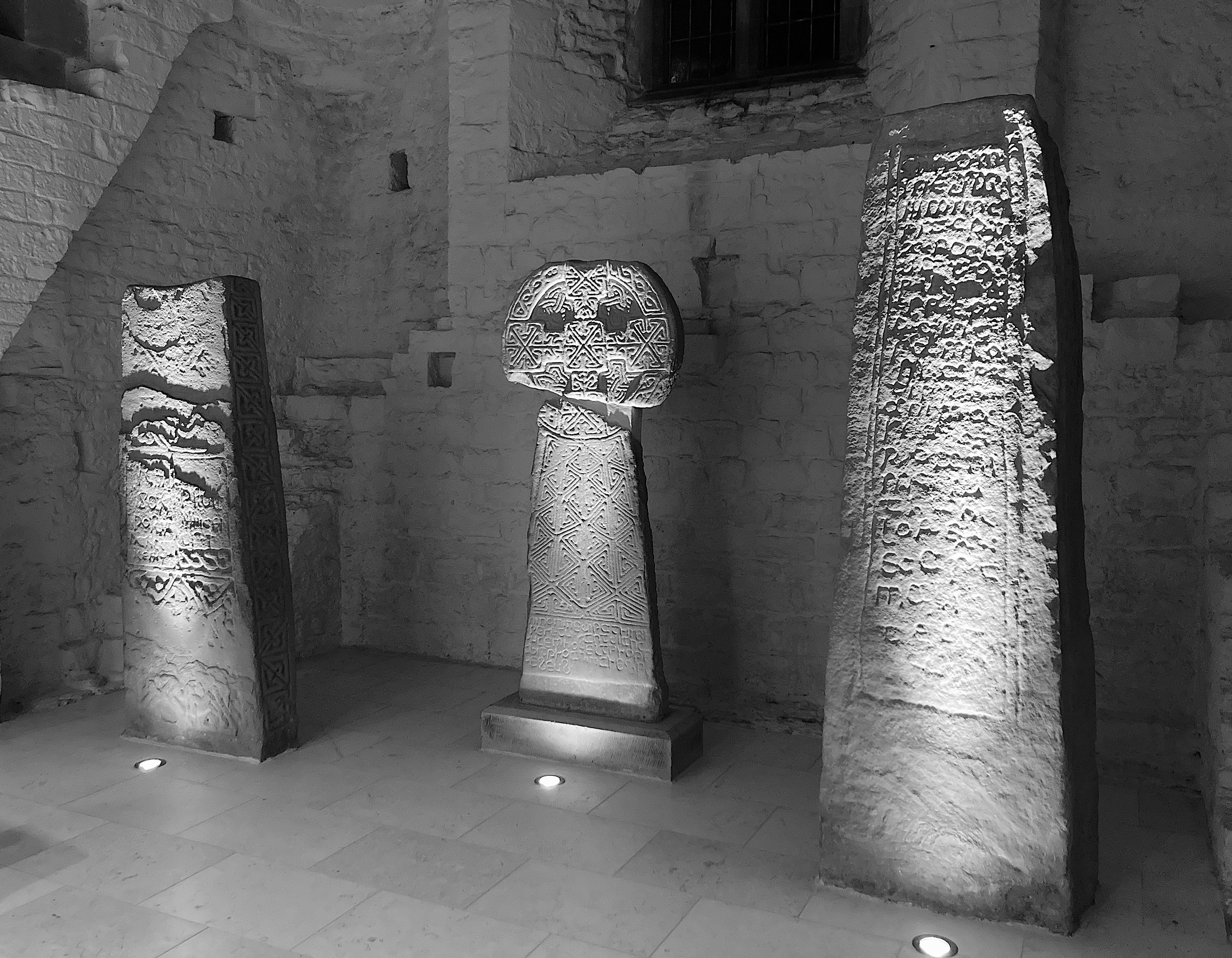
The feel of these ancient crosses not only connects us with the vibrant faith of the early church, but we also feel ourselves making a connection with the cross of Jesus.
Right: three of the inscribed Celtic stones from the Llanilltud collection
Illtyd
In the candlelight
Illtyd leans over his grainy wooden desk.
His head is as still as a standing stone
as he leans his mind once more
into the pages of holy scripture
that are to him the brightest of lights
in a world of deep shadows.
The hand that once wielded a great iron sword
now grasps the feather of a goose,
and in the silence
wisdom is scratched onto another page of history,
and the foes of God are silenced.O Lord,
bless the mind you have entrusted to me.
Take me deep into your sacred scriptures
and reveal to me your treasures.
Let me wield your wisdom
with an Illtyd heart,
that radiant truth
may set the captive free.

